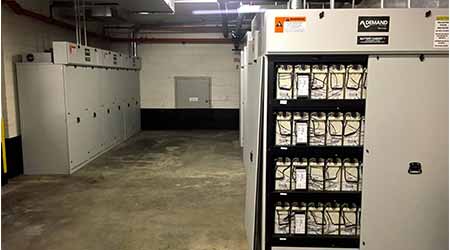 Demand Energy
Demand EnergyEnergy Storage Case Study 2: Reducing Peak Demand
Third of a four-part Green Building Report.
Glenwood is one of New York City’s largest owners and builders of luxury rental apartments. The full-service Manhattan real estate organization prides itself on being able to offer residents everything they need to live the “Manhattan lifestyle.” Like most high-rise properties in New York, however, Glenwood is affected by the demand that 13 gigawatts of peaking power places on the city’s grid during the summer air-conditioning season.
To address this problem, Glenwood participates in New York ISO and Con Edison demand response programs aimed at shedding loads during peak periods. Glenwood has been working with a manufacturer on an energy storage-based solution at a number of its residential properties. The systems are controlled by the vendor’s software, which maximizes the economic returns of behind-the-meter storage systems, alone or in combination with distributed generation.
In 2012, Glenwood installed a 225 kW/2 MWh storage system with the company’s software in its Barclay Tower property in downtown Manhattan. One benefit for building owners is the relative compactness and portability of such systems, which can be installed in constrained spaces such as garages and basements. The energy storage system allows Glenwood to switch operating modes from demand capping to demand response without a financial penalty, and also helps Con Edison manage a more granular, location-based response to peak electricity demand across different sections of New York.
New York has some of the most expensive demand charges in the world. After the first year of operation, Glenwood saw a 14 percent reduction in its cost of energy and power. The company is now working to install an additional 1 MW/4 MWh of storage systems across ten Glenwood buildings for distributed grid support.
Related Topics:















